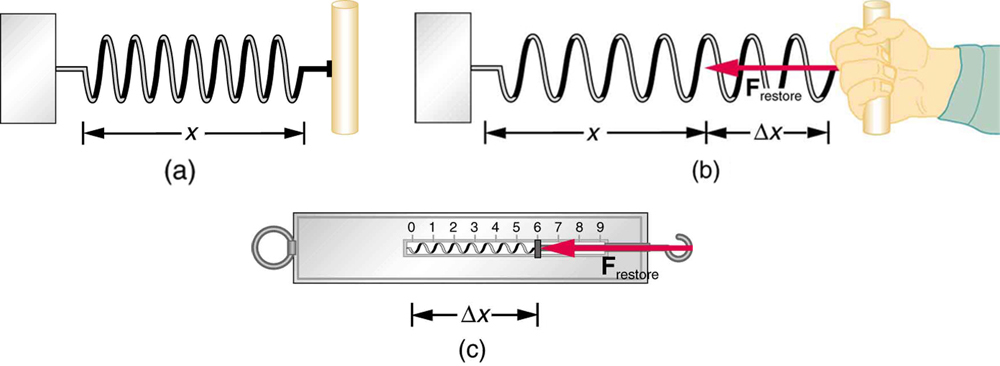Dynamics: Force and Newton’s Laws of Motion and Applications: Friction, Drag and Elasticity
23 Development of Force Concept
Learning Objectives
- Understand the definition of force.
Motion is everywhere in biological systems: from the beating of your heart pumping blood, to muscles pulling on bones, to cells moving within tissues. To understand why things move, we study dynamics, the branch of physics that focuses on forces and their effects on motion.
What is Force?
At its simplest, force is a push or a pull. It has two important features:
-
Magnitude (how strong the force is)
-
Direction (which way the force acts)
Because force has both magnitude and direction, it is classified as a vector quantity.
For example:
-
A cannon exerts a very strong force to launch a cannonball.
-
Earth exerts a very weak downward pull on a tiny flea.
Forces can act in many directions and can be combined. When two people push a third person from different directions, the total force on that person is the vector sum of the individual forces (see Figure 23.1).
Visualizing Forces: Free-Body Diagrams
A useful tool in analyzing forces is the free-body diagram (Figure 23.1b). In these diagrams:
-
The object or system is represented by a dot.
-
All the external forces acting on the object are shown as arrows (vectors) pointing away from the dot.
Internal forces inside the object don’t affect its overall motion and are therefore ignored in free-body diagrams.
Free-body diagrams are essential for solving problems in dynamics and will be used frequently.
Measuring Force: Standard Units
Just like measuring length requires a standard unit (meters, feet, etc.), measuring force requires a standard force.
One common standard is the force exerted by a stretched spring (Figure 23.2). When you stretch a spring, it pulls back with a force called a restoring force. By measuring how much the spring stretches, we get a reproducible unit of force.
Devices like spring scales use this principle to measure forces, including weights.

Take-Home Experiment: Force Standards
Try this simple experiment:
-
Hang one rubber band vertically.
-
Attach small weights (like paper clips with household items) and measure how much the rubber band stretches.
-
Increase the weights and observe how the stretch changes.
-
Try using two rubber bands and compare the stretch.
-
What happens if you push the weights sideways?
This hands-on activity demonstrates how forces can be measured and combined.
Section Summary
-
Dynamics studies how forces affect motion.
-
A force is a vector push or pull with magnitude and direction.
-
External forces come from outside the object and affect its motion.
-
A free-body diagram shows all external forces acting on an object.
Conceptual Questions
- Propose a force standard different from the example of a stretched spring discussed in the text. Your standard must be capable of producing the same force repeatedly.
- What properties do forces have that allow us to classify them as vectors?
Glossary
- dynamics
- the study of how forces affect the motion of objects and systems
- external force
- a force acting on an object or system that originates outside of the object or system
- free-body diagram
- a sketch showing all of the external forces acting on an object or system; the system is represented by a dot, and the forces are represented by vectors extending outward from the dot
- force
- a push or pull on an object with a specific magnitude and direction; can be represented by vectors; can be expressed as a multiple of a standard force
the study of how forces affect the motion of objects and systems
a push or pull on an object with a specific magnitude and direction; can be represented by vectors; can be expressed as a multiple of a standard force
a force acting on an object or system that originates outside of the object or system
a sketch showing all of the external forces acting on an object or system; the system is represented by a dot, and the forces are represented by vectors extending outward from the dot

